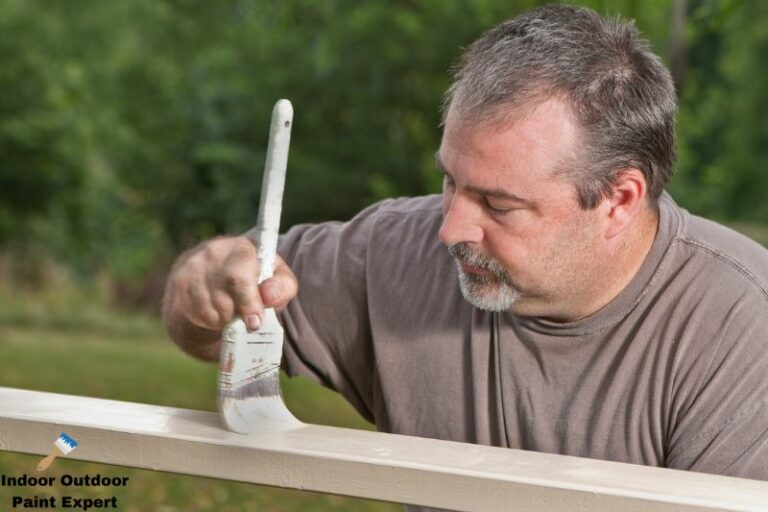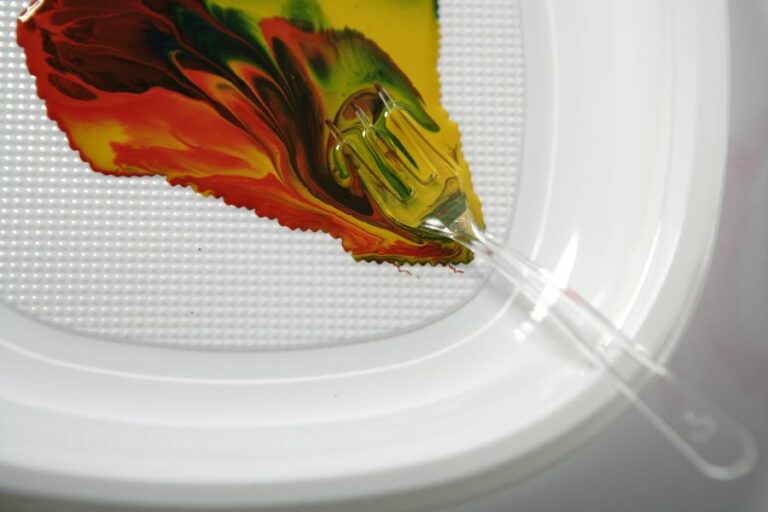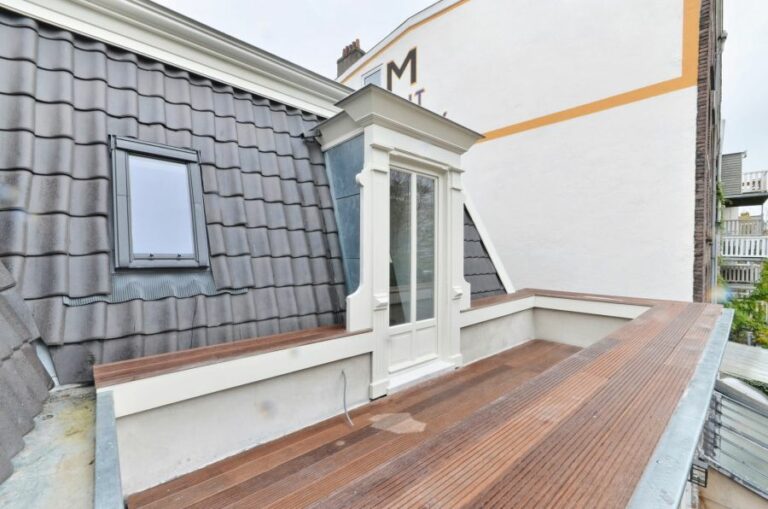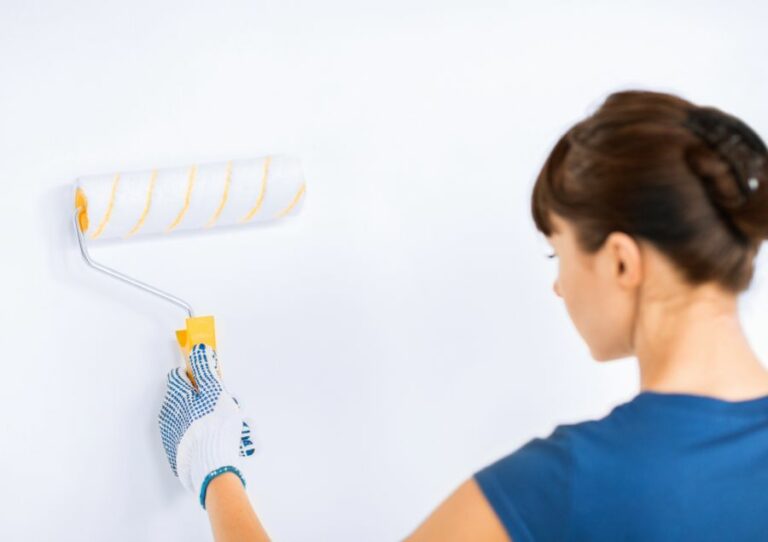Outdoor Metal Paint, 25 Things You Should Know
Are you looking to refresh your outdoor space with a vibrant touch? Delve into the world of metal painting and explore various options to protect and beautify your rusty gates, patio furniture, and more. Discover the best paints, top application tips, and maintenance secrets to ensure long-lasting results. So grab a brush, and let’s start on that overdue painting project transforming your garden into an inviting, colorful haven!
Outdoor metal paint:
Let’s discuss the importance of using high-quality outdoor metal paint for protecting and enhancing the appearance of metal surfaces. I will cover the three primary types of metal paints – water-based, oil-based, and direct-to-metal (DTM) paints, along with their benefits, such as protection against corrosion, improved aesthetics, and increased lifespan. Choosing the right paint involves considering surface type, finish, durability, and environmental impact. Lastly, I will provide application tips for a successful and long-lasting finish, such as surface preparation, priming, painting, and drying.

Discover the best outdoor metal paint options that provide remarkable durability and performance. Learn about various types, finishes, and application methods to protect and transform your metal surfaces, ensuring they withstand the test of time and weather.
Don’t miss out on expert recommendations and helpful tips for flawless results.
Contents
- 1 Exterior Metallic Coating
- 2 What Type of Paint Should You Utilize for Outdoor Metal Surfaces?
- 3 What is the Most Effective and Durable Paint to Apply on Exterior Metal Surfaces?
- 3.1 • Epoxy-Based Paints: Durable and Long-Lasting Protection
- 3.2 • Acrylic Latex Paints: Versatile and Easy-to-Use
- 3.3 • Alkyd (Oil-Based) Paints: Ideal for High-Traffic Areas
- 3.4 • Direct-To-Metal (DTM) Paints: One-Step Solution for Metal Surfaces
- 3.5 • Conclusion: Choose the Right Paint Based on Your Needs
- 4 Is Priming Necessary Before Painting on Metal Surfaces?
- 5 What is the process for painting outdoor metal surfaces?
Exterior Metallic Coating
• Introduction
Whether you’re looking to protect and enhance the appearance of your garden furniture, metal gates, or railings, using high-quality outdoor metal paint is crucial. With so many products on the market, making the right choice for your project can be challenging.
• Types of Outdoor Metal Paints
Before diving into the specific details of outdoor metal paint, it’s important to understand the differences between the primary types. The three most common types are:
– Water-Based Paints
Water-based metal paints are environmentally friendly and easy to clean up. They typically dry faster than oil-based paints and have lower levels of volatile organic compounds (VOCs), making them safer for both the environment and people.
However, they may not be as durable and long-lasting as oil-based paints.
– Oil-Based Paints
Oil-based paints offer greater durability and resistance to the elements, making them suitable for heavy-duty outdoor metal applications. They have a longer drying time, which allows for a smoother finish as the paint has more time to self-level.
On the downside, oil-based paints produce high levels of VOCs and are more challenging to clean up.
– Direct to Metal (DTM) Paints
DTM paints are specially formulated on metal surfaces without a primer. These paints provide excellent adhesion and corrosion protection, saving time and resources during application.
Many DTM paints are water-based, combining the advantages of water-based paints with the added benefit of adhering directly to metal.
• Benefits of Outdoor Metal Paint
– Protection Against Corrosion
One of the main reasons to invest in high-quality outdoor metal paint is to protect the underlying metal from corrosion. Choosing a paint with added corrosion inhibitors, such as zinc phosphate, will further enhance the protection offered.
– Improved Aesthetics
Using outdoor metal paint protects your metal surfaces and improves their overall appearance. With a range of finishes and colors available, you can easily find the perfect paint to match your tastes and enhance your outdoor space.
– Increased Lifespan
Investing in good exterior metal paint will prolong the lifespan of your metal surfaces. The protection against the elements and the reduced risk of corrosion leads to less need for repairs and replacements, saving you money in the long run.
• How to Choose the Right Outdoor Metal Paint
When selecting the ideal outdoor metal paint for your project, keep the following factors in mind:
– Surface Type
Consider the specific metal surface you are painting, as some paints adhere better to certain metals. For instance, if you’re painting galvanized steel, ensure that the paint you choose is compatible.
– Finish
Outdoor metal paint is available in various finishes, including gloss, semi-gloss, and matte. Determine the desired finish, as it can significantly impact the project’s final appearance.
– Durability
Choose a durable paint, especially for outdoor projects exposed to harsh weather conditions. Oil-based paints and DTM paints usually provide better durability than standard water-based paints.
– Environmental Impact
If you’re concerned about the environmental impact, look for outdoor metal paints with low VOC levels to minimize emissions and reduce any potential harm to the ecosystem.
• Application Tips for Outdoor Metal Paint
Once you’ve selected the perfect outdoor metal paint for your project, follow these tips to ensure a successful application:
– Surface Preparation
Proper surface preparation is crucial for the paint to adhere well and last longer. Remove any rust or old paint from the surface using a wire brush or sandpaper. Clean the surface with a metal cleaner or mild detergent to remove any dust, dirt, and grease.
– Priming
While DTM paints do not require a primer, using a metal primer for other types of outdoor metal paint is highly recommended. Priming the surface will improve adhesion and provide even better protection against corrosion.
– Painting
Apply the paint using a brush, roller, or sprayer, depending on your preference and the size of the project. Two coats are often recommended but always refer to the manufacturer’s guidelines for the specific product being used.
– Drying and Curing
Allow the paint to dry according to the manufacturer’s instructions before applying a second coat or exposing the painted surface to the elements. Adequate drying and curing times are essential for the best results and longevity.
• Conclusion
Using the right outdoor metal paint is essential for protecting your metal surfaces from corrosion and improving their overall appearance. You can ensure a successful and long-lasting finish by understanding the different types of metal paints, their benefits, and how to choose the perfect paint for your project.
Proper surface preparation, priming (if needed), and patience during the painting and curing process will result in a professional and attractive final product.
What Type of Paint Should You Utilize for Outdoor Metal Surfaces?
Outdoor metal surfaces endure exposure to varying weather conditions, direct sunlight, and moisture. Therefore, choosing the right paint is critical for maintaining these surfaces’ appearance, durability, and longevity.
• Understanding the Importance of Proper Paint Selection
The correct paint is essential to the success and longevity of an outdoor metal painting project. Paints formulated specifically for outdoor metal surfaces provide essential protection against weathering, corrosion, and fading while maintaining an attractive appearance.
Some key factors to consider when selecting paint for outdoor metals include:
- Weather Resistance: The paint should provide adequate protection against harsh weather conditions such as exposure to sunlight, rain, and snow.
- Corrosion Resistance: Metal surfaces are prone to rust and corrosion, so choosing a paint that offers excellent resistance against these damaging effects is crucial.
- Color Retention: The paint should maintain its color and gloss for an extended period of time, even when exposed to direct sunlight and other weathering elements.
- Adhesion: Good quality paint should adhere well to the metal surface without peeling or flaking.
• Top Paint Choices for Outdoor Metal Surfaces
The following paints have proven to deliver excellent performance when used on outdoor metal surfaces.
– Oil-based Alkyd Paints
Oil-based alkyd paints are known for their excellent durability and adhesion, making them an ideal choice for outdoor metal surfaces. These paints are resistant to moisture, which helps prevent rust and corrosion.
They also offer great color retention, ensuring that the painted surface maintains its appearance over time.
I recommend using high-quality oil-based alkyd paint for outdoor metal projects that require maximum protection and longevity.
– Acrylic Latex Paints
Acrylic latex paints are water-based paints that provide excellent adhesion, color retention, and resistance to weathering. These paints dry quickly and clean up easily with soap and water.
Acrylic latex paints are also flexible, reducing the risk of cracking or peeling when the metal expands and contracts due to temperature fluctuations.
I suggest choosing an acrylic latex paint with a rust-inhibiting additive or primer for a versatile, environmentally friendly option.
– Epoxy Paints
Epoxy paints are two-component coatings consisting of a base and a curing agent. When these two components are mixed, they create a highly durable and chemically resistant layer that bonds exceptionally well to metal surfaces.
Epoxy paints offer excellent protection against moisture, chemicals, and abrasion, making them well-suited for heavy-duty outdoor metal applications such as machinery, storage tanks, and industrial equipment.
I recommend using an epoxy paint system for the most rugged outdoor metal environments for maximum durability and protection.
– Direct-to-Metal (DTM) Paints
Direct-to-metal paints are specially formulated to bond directly to metal surfaces without the need for a separate primer layer. These paints provide excellent adhesion and corrosion resistance.
DTM paints are available in oil-based alkyd, acrylic latex, and epoxy formulations to accommodate various outdoor metal painting needs.
If you’re looking for a paint that simplifies the application process, consider using a direct-to-metal paint.
• Tips for Surface Preparation and Paint Application
Proper surface preparation and paint application are essential for a successful outdoor metal painting project. The following tips will help ensure the best possible results:
- Clean the Surface: Remove dirt, grease, and loose paint from the metal surface using a wire brush, scraper, or sandpaper. You can use a degreaser or a detergent solution for cleaning purposes.
- Remove Rust and Corrosion: Use a rust remover or a wire brush to remove any rust or corrosion before painting. Applying paint over rust or corrosion can compromise the adhesion and durability of the paint.
- Prime the Surface: If you are not using direct-to-metal paint, apply a high-quality rust-inhibiting metal primer before painting. This will help ensure optimal adhesion, durability, and protection against corrosion.
- Apply the Paint: Use a brush, roller, or sprayer to apply the selected paint in thin, even coats. Be sure to cover the entire surface, and allow each coat to dry according to the manufacturer’s instructions before applying subsequent coats.
• Final Thoughts
Choosing the right paint type for outdoor metal surfaces is essential for achieving a durable, weather-resistant finish. Consider factors such as weather resistance, corrosion protection, and adhesion when selecting a paint type.
You can achieve a successful and long-lasting outdoor metal painting project by following proper surface preparation and application techniques.
Paint Type | Description | Advantages |
|---|---|---|
Latex Paint | Water-based paint that is easy to apply and quick to dry. | Resistant to UV rays, low VOCs, and easy clean-up. |
Oil-Based Paint | A traditional paint option that uses natural oils as a base. | Very durable and long-lasting. |
Acrylic Enamel Paint | A type of paint that combines the best properties of oil-based and acrylic paints. | Highly durable, easy to clean, and resistant to fading. |
Epoxy Paint | A durable and strong paint that forms a protective layer on the surface. | Chemical resistant, waterproof, and long-lasting. |
Direct-to-Metal (DTM) Paint | A specially formulated paint that can be directly applied to metal surfaces without a primer. | Saves time, is durable, and easily adheres to metal surfaces. |
What is the Most Effective and Durable Paint to Apply on Exterior Metal Surfaces?
Outdoor metal surfaces are constantly exposed to various elements, such as weather, sunlight, and humidity. These elements can corrode and damage the paint on the metal surfaces, eventually leading to rust and deterioration.
To protect and enhance the appearance of outdoor metal surfaces, it is essential to use the appropriate type of paint.
• Epoxy-Based Paints: Durable and Long-Lasting Protection
Epoxy-based paints are known for their exceptional durability and adhesion. These paints provide long-lasting protection against corrosion, abrasion, and harsh weather conditions. Epoxy-based paints are perfect for outdoor metal surfaces like fences, gates, railings, and outdoor furniture.
Benefits of epoxy-based paints:
- Excellent adhesion and durability
- Long-lasting protection against corrosion and weathering
- Resistant to chipping and peeling
- Low maintenance
Application tips:
- Clean and prepare the metal surface thoroughly before painting
- Apply a primer specifically designed for metal surfaces to improve adhesion
- Use a roller, brush, or spray gun to apply the epoxy paint
- Allow each coat of paint to dry completely before applying the next one
- Apply at least two coats of epoxy paint for optimum protection
• Acrylic Latex Paints: Versatile and Easy-to-Use
Acrylic latex paints are water-based paints that are easy to apply and have excellent resistance to UV rays and weathering. These paints are also environmentally friendly, emit low odors, and dry quickly, making them an attractive option for metal surfaces exposed to outdoor conditions.
Acrylic latex paints are ideal for outdoor metal surfaces like window frames, doors, and metal siding.
Benefits of acrylic latex paints:
- Water-based and environmentally friendly
- Easy to apply and clean up
- Excellent UV and weather resistance
- Quick drying time
Application tips:
- Clean and prepare the metal surface thoroughly before painting
- Apply a primer specifically designed for metal surfaces to improve adhesion
- Use a roller, brush, or spray gun to apply the acrylic latex paint
- Allow each coat of paint to dry completely before applying the next one
- Apply at least two coats of acrylic latex paint for the best results
• Alkyd (Oil-Based) Paints: Ideal for High-Traffic Areas
Alkyd, or oil-based, paints are slower-drying paints with exceptional durability and resistance to wear and tear. These paints are perfect for metal surfaces that are exposed to high traffic or frequent use, such as gates, railings, and outdoor furniture.
Alkyd paints provide a smooth, hard finish that is highly resistant to chipping, peeling, and fading over time.
Benefits of alkyd (oil-based) paints:
- Durable and wear-resistant
- Smooth, hard finish
- Excellent resistance to chipping, peeling, and fading
- Ideal for high-traffic areas
Application tips:
- Clean and prepare the metal surface thoroughly before painting
- Apply a primer specifically designed for metal surfaces to improve adhesion
- Use a natural-bristle brush to apply the alkyd paint, and avoid using a roller or spray gun, as they can produce an uneven finish.
- Allow each coat of paint to dry completely before applying the next one, as alkyd paints take longer to dry.
- Apply at least two coats of alkyd paint for optimum durability and protection.
• Direct-To-Metal (DTM) Paints: One-Step Solution for Metal Surfaces
Direct-To-Metal (DTM) paints are specially formulated paints that can be applied directly to metal surfaces without the need for a primer. These paints offer excellent corrosion resistance, adhesion, and weathering protection.
DTM paints suit various outdoor metal surfaces, such as roofing, siding, and outdoor furniture.
Benefits of DTM paints:
- No need for a primer
- Excellent corrosion resistance and adhesion
- Weathering protection
- Suitable for a wide range of outdoor metal surfaces
Application tips:
- Clean and prepare the metal surface thoroughly before painting
- Use a roller, brush, or spray gun to apply the DTM paint
- Allow each coat of paint to dry completely before applying the next one
- Apply at least two coats of DTM paint for the best results
• Conclusion: Choose the Right Paint Based on Your Needs
Determining the best paint to use on outdoor metal surfaces depends on your project’s specific requirements and conditions.
Epoxy-based and alkyd (oil-based) paints offer excellent durability and protection, making them suitable for high-traffic areas and surfaces exposed to harsh weather conditions.
Acrylic latex paints are versatile, environmentally friendly, and easy to use, while Direct-To-Metal (DTM) paints offer the convenience of a one-step solution for metal surfaces.
Each type of paint has unique benefits and application techniques, so consider your needs carefully and choose the right paint to ensure a long-lasting and attractive finish for outdoor metal surfaces.
Paint Name | Type | Pros | Cons |
|---|---|---|---|
Rust-Oleum Protective Enamel | Oil-based enamel | Excellent rust prevention, superior durability, dry quickly | Strong odor, clean up requires chemicals, less environmentally friendly |
Krylon COLORmaxx Spray Paint | Aerosol spray paint | Easy to apply, suitable for a variety of surfaces, quick-drying, good rust protection | Thin coats, might require multiple coats for best results, may be more difficult to control |
Montana Cans | Aerosol spray paint | Low-pressure system for precise application, a vast range of colors, weather-resistant | More expensive, requires multiple coats, may be more difficult to find in stores |
Benjamin Moore Aura Exterior Paint | Water-based acrylic paint | Environmentally friendly, easy cleanup, mildew-resistant, long-lasting finish | More expensive, may require a separate primer for maximum adhesion and protection |
BEHR Alkyd Semi-Gloss Enamel | Water-based alkyd paint | High-performance, rust-resistant, easy to clean, provides a durable semi-gloss finish | May require longer drying times, might need multiple coats for best results |
Is Priming Necessary Before Painting on Metal Surfaces?
Priming metal surfaces before painting is essential to ensure proper adhesion, durability, and longevity of the finished paint job.
• Why Is Priming Necessary?
There are several reasons to the prime metal before painting:
- Prevention of corrosion and rust: Primers create a barrier between the metal and the environment, preventing moisture and air from causing corrosion and rust.
- Adhesion: Primers provide a surface to which the paint can adhere, ensuring that the paint sticks properly to the metal and stays in place for a long time.
- Coverage: Primers help to cover any imperfections on the metal surface to ensure a smooth, even paint job.
- Color enhancement: Some primers can enhance the color of the topcoat, giving it a more vibrant and long-lasting appearance.
• Types of Primers
Several types of primers are available for metal surfaces, depending on the specific requirements and the type of metal being painted.
– Zinc Chromate Primers
Zinc chromate primers are widely used to protect aluminum, galvanized steel, and other metal substrates from corrosion. These primers contain zinc chromate, which gives them excellent corrosion resistance and durability.
– Epoxy Primers
Epoxy primers offer excellent adhesion, corrosion protection, and chemical resistance. They are suitable for various metal surfaces, including steel, aluminum, and galvanized metal.
– Alkyd Primers
Alkyd primers are suitable for various metal surfaces, including steel, aluminum, and galvanized metal. These primers offer good adhesion and corrosion protection but might not be as durable as epoxy primers.
– Acid Etch Primers
Acid etch primers are specifically designed for non-ferrous metals, such as aluminum, brass, and stainless steel. These primers have an acid component that helps to etch the surface of the metal, providing a strong bonding surface for the paint.
• Before You Prime: Preparing the Metal Surface
Before applying a primer to the metal surface, it is crucial to follow these steps to ensure proper adhesion and protection:
1. Clean the Surface
Remove any dirt, dust, grease, and debris from the surface using a mild detergent and water. Rinse thoroughly with clean water and allow the surface to dry completely.
2. Remove Rust and Corrosion
If any rust or corrosion is present on the metal surface, use a wire brush, sandpaper, or abrasive pad to remove it. Apply a rust converter if necessary.
3. Sand the Surface
To ensure proper adhesion of the primer, lightly sand the metal surface using medium-grit sandpaper to create a slightly rough texture.
4. Wipe the Surface
Wipe the surface using a tack cloth or microfiber cloth to remove any dust and debris created during sanding.
• Applying the Primer
Once the surface is prepared, follow these steps to apply the primer:
- Mix the primer: If using a two-component primer, mix the two components according to the manufacturer’s instructions.
- Safety precautions: Wear eye protection, gloves, and a mask to protect yourself from fumes and chemicals.
- Apply the primer: Using a paintbrush, roller, or sprayer, apply a thin and even coat of primer to the entire metal surface. Be sure to cover all edges and corners.
- Dry time: Allow the primer to dry for the recommended time specified by the manufacturer before applying the topcoat of paint.
• Top Tips for Priming Metal Surfaces
- Always choose the appropriate primer for your specific metal type and application requirements.
- Follow the manufacturer’s guidelines on dry times, recoat intervals, and application techniques.
- When applying multiple coats of primer, sand between coats to ensure proper adhesion and a smooth surface.
- Properly dispose of any unused primer, cleaning materials, and protective gear to follow safety and environmental guidelines.
In conclusion, priming metal surfaces is necessary to ensure your paint job’s durability and longevity. By following the steps outlined in this article, you can achieve a professional finish that will protect and enhance the appearance of your metal project.
What is the process for painting outdoor metal surfaces?
Painting outdoor metal surfaces can be both tricky and rewarding. The right paint job can make old and rusty surfaces look brand new while also adding an extra layer of protection against the elements. However, the process does require some preparation, patience, and the right tools.
• Choosing the Right Paint for Outdoor Metal Surfaces
Before beginning the painting process, it’s crucial that you select the appropriate paint for your specific metal surface. Certain paints are made to adhere better to various metals, so pay attention to the label when making your selection.
– Paints for Ferrous Metals
Ferrous metals are those that contain iron, such as steel and wrought iron. These metals are more prone to rusting and corrosion, so choosing a paint that provides added protection is important. Look for paint labeled specifically for use on ferrous metals and rust-inhibitive primers and topcoats.
– Paints for Non-Ferrous Metals
Non-ferrous metals, such as aluminum, copper, and brass, do not contain iron and are less prone to rusting. Nevertheless, these metals still need appropriate protection when exposed to the elements. Choose paints that are specifically formulated for use on non-ferrous metals.
• Preparing the Metal Surface for Painting
Before applying any paint, proper preparation is essential. This will ensure good paint adhesion and long-lasting results. Follow these steps to prepare your outdoor metal surface:
1. Remove Old Paint and Rust
Use a wire brush, sandpaper, or a paint scraper to remove any existing paint or rust from the surface. Be sure to wear safety goggles and gloves while carrying out this task, as rust particles can easily irritate the eyes and skin.
2. Clean the Surface
Once all paint and rust have been removed, clean the metal surface thoroughly to remove any remaining debris, dust, or grease. Use a cloth soaked in a mild detergent and water mixture to wipe down the surface, and then rinse with clean water. Allow the metal to dry completely before moving on to the next step.
3. Sand the Surface
To create an ideal surface for the paint to adhere to, lightly sand the metal with medium-grit sandpaper. This will help remove any remaining residue and create a slightly rough surface to which the paint can better adhere. After sanding, wipe down the surface with a clean cloth to remove any dust.
4. Apply a Primer
Applying a suitable primer to your outdoor metal surface is essential before painting. Primer helps create an even base for the paint to adhere to and provides added protection against rust and corrosion.
Choose a primer compatible with the type of metal and the paint you are using. Apply the primer according to the manufacturer’s instructions, and allow it to dry completely before applying the paint.
• Painting the Outdoor Metal Surface
After properly preparing the metal surface, you’re ready to apply the paint. Here are some tips for a successful paint job:
1. Choose the Right Tool for the Job
Depending on the size and shape of your metal surface, you may choose to use a brush, a roller, or a sprayer to apply the paint. For smaller or more detailed surfaces, a brush may be more appropriate. A roller or sprayer will make the job quicker and more efficient for larger or flat surfaces.
2. Apply the Paint in Thin, Even Layers
When applying paint to your outdoor metal surface, applying thin, even coats is crucial. Applying paint too thickly can result in uneven coverage and poor adhesion. It’s better to apply multiple thin coats than to try to cover the surface with one thick coat
Allow each coat to dry completely before applying the next.
3. Pay Attention to the Weather
Ideally, choose a day with low humidity and temperatures between 50 and 90 degrees Fahrenheit for painting outdoor metal surfaces. Extreme temperatures or humidity can negatively affect the drying and curing of the paint.
Also, avoid painting in direct sunlight, as this can cause the paint to dry too quickly and result in an uneven finish.
4. Allow Ample Drying Time
After applying the final coat of paint, it’s essential to allow ample drying time before exposing the metal surface to the elements. The time needed will depend on the type of paint and environmental conditions, so refer to the paint manufacturer’s recommendations for drying times.
• Maintaining Your Painted Outdoor Metal
While a well-prepared and painted outdoor metal surface should be resistant to the elements, it’s still a good idea to keep an eye on the condition of the paint over time. Carry out periodic inspections to check for any signs of rust, chipping, or paint failure.
Address any issues promptly to maintain the longevity and appearance of your painted metal surface.
In conclusion, painting outdoor metal surfaces can be fulfilling when done correctly. With the right preparation, paint selection, and proper application techniques, you can give your outdoor metal surfaces a fresh and lasting new look.
Step | Instructions |
|---|---|
1 | Choose the right paint for outdoor metal surfaces, such as oil-based paint or spray paint specifically designed for metal. |
2 | Prepare the surface by cleaning it using soap and water, then allow it to dry completely. |
3 | Remove any loose paint or rust by sanding the surface with a sandpaper or a wire brush. |
4 | Apply a coat of rust-inhibiting primer according to the manufacturer’s instructions and let it dry completely. |
5 | Apply the paint in multiple thin coats, allowing each coat to dry according to the manufacturer’s recommended drying time. |
6 | Allow the final coat to dry completely before using or exposing the painted metal to moisture or direct sunlight. |







